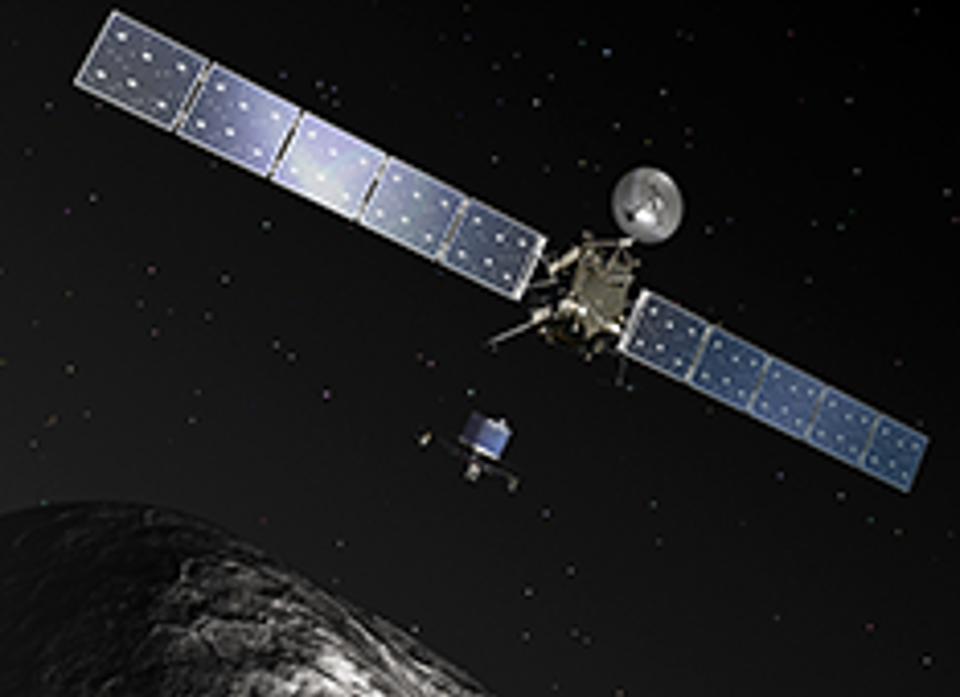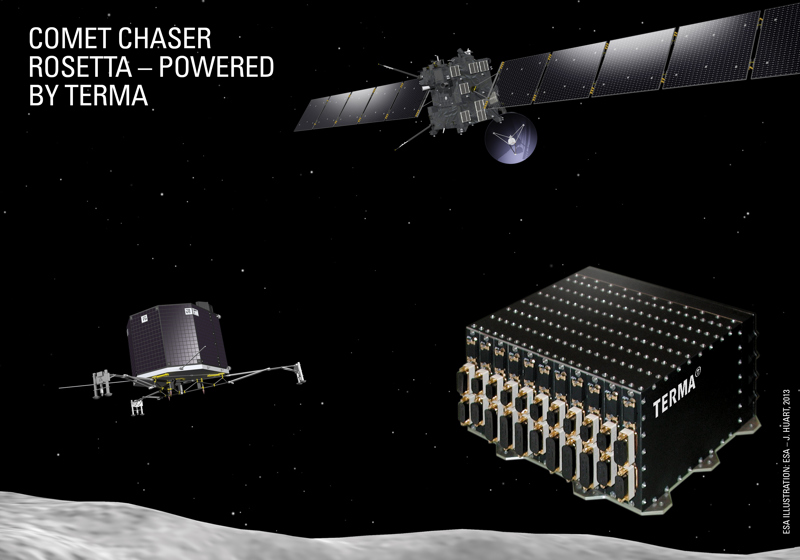2014-02-28
Rosetta is in Excellent Shape
Six weeks after Rosetta’s wake-up call from its position 825 million kilometers from Earth, the satellite and the crucial PCU from Terma are in excellent shape.

On 20 January 2014, the scientific and flight control teams at ESOC together with space enthusiasts and media worldwide went into " orbit" when a tiny green peak signal appeared on a monitor in ESA's control center in Darmstadt at 19:18 CET. The signal indicated that comet chaser Rosetta was awake as planned after 31 months of hibernation.
In the days that followed, ESA's team of flight controllers implemented a number of tests to make an initial assessment of the satellite's condition after the long hibernation.

What was highly interesting at first was the supply of power from the solar panels, but it soon turned out that in spite of the distance to the sun at 673 million km, the supply was OK. There had been no weakening of the panels during the hibernation period.
In this context, Terma received information from ESA that "our" Power Conditioning Unit (PCU) operates and performs exactly as planned. It was active throughout the hibernation period to keep the satellite's instruments warm with an average temperature of plus 15o C.
After the initial check, many detailed checkouts of the satellite and its instruments have been implemented, and the message is clear: the satellite is fully functional.
Throughout March and April, the scientific and technical teams will prepare Rosetta's 11 scientific instruments, including the landing module Philae. It will be activated for the first time since the hibernation, in order to ensure that the control system and 10 instruments are operational. The landing of Philae on Comet 67P/Churyumov-Gerasimenko is planned for November 2014.
Rosetta is equipped with a range of experiments that will tell the scientific teams everything about the characteristics of this comet and how its behavior changes as it get closer to the Sun, ultimately providing a better picture of the role comets have played in the Solar System’s evolution.
The shortest distance between the comet and the sun (perihelion passage) will take place on 13 August 2015 at a distance of 185 million kilometers. For comparison, Earth's perihelion is 147 million kilometers and occurred on 4 January this year.

Who we are
Terma in Brief
The Denmark based high-tech Terma Group develops products and systems for defense and non-defense security applications; including command and control systems, radar systems, self-protection systems for aircraft, space technology, and aerostructures for the aircraft industry.
Learn more about us



